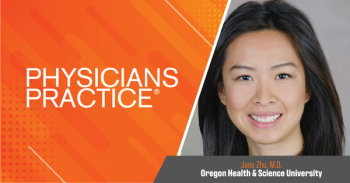
Syringe supply shortage could challenge Covid-19 vaccine distribution
A needle-free Covid-19 vaccine delivery option will help ensure greater compliance.
Case counts, hospitalizations, and stay-at-home orders have rightfully been dominating COVID-19 news coverage, but there is a serious challenge looming on the horizon that few are aware of and even fewer are talking about: a syringe shortage.
A worldwide shortage of hypodermic needles and syringes could threaten nations’ abilities to deliver a COVID-19 vaccine to their citizens during a mass global inoculation, once a vaccine is approved. In a letter to the White House Coronavirus Task Force, one Trump administration official estimated that the United States alone would require 850 million needles and syringes to deliver COVID-19 and flu vaccines.
“Our current inventory of these supplies is limited and, under current capabilities, it would take up to two years to produce this amount of specialized safety needles,” White House Trade and Manufacturing Policy Director Peter Navarro
As of early May, the Strategic National Stockpile held just
With a vaccine—or multiple vaccines—potentially expected to be available sometime next year, there may not be an adequate supply of needles and syringes to administer it. However, there is an alternative to traditional needles and syringes that could ease the shortage: needle-free injection technology.
Needle-free injection technology is designed around a high-pressured, spring-driven, stainless-steel piston and works by using a specially-designed, needle-free syringe to inject liquid medication subcutaneously, intramuscularly, or intradermally via a specialized device that results in greater comfort to patients.
Following are several potential advantages provided by needle-free injection technology.
Reduces shortages of traditional needles and syringes
COVID-19 has already proven its capacity to create medical equipment shortages, with supplies of face masks, gowns, and other
Lessens the effects of needle-phobia to improve vaccine compliance:
Fear of needles is a generally underappreciated health issue that can result in many people avoiding needed care, particularly vaccines. Citing several other studies, research published in the journal
Patients with chronic conditions such as diabetes and multiple sclerosis—precisely those who are
Strengthen healthcare-worker safety:
While the precise amount of needlestick injuries experienced by U.S. healthcare workers is unknown, estimates range from 600,000 to 800,000 each year, according to the
Support staff experience the majority of needlestick injuries, which can result in “severe and long-lasting” emotional impact, according to the CDC. These injuries are very costly, resulting in an estimated
Given the emotional and economic toll the COVID-19 pandemic has already caused, we can’t afford to miss any opportunities to begin mitigating its damage. A vaccine – when it becomes available – holds the potential to usher in a return to normalcy that many American desperately crave. Adding a needle-free delivery option will help ensure greater vaccine compliance and may result in the difference between many needle-phobic people obtaining the vaccine versus the possibility of contributing to the spread of the novel coronavirus throughout their communities.
About the Author
Scott E. McFarland, JD, serves as CEO of
Newsletter
Optimize your practice with the Physicians Practice newsletter, offering management pearls, leadership tips, and business strategies tailored for practice administrators and physicians of any specialty.








